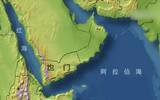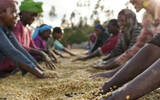How do coffee beans get from seed to cup?

I don't know if you have ever been curious about where this cup of coffee comes from, as in front of the street. Today, Qianjie will briefly share with you what coffee beans have experienced in this wonderful life.

Coffee planting
The coffee beans we are familiar with are actually the seeds in the cherry fruit of coffee. The first thing you want to do to get a coffee bean is to breed and plant coffee trees.
Take the planting demand of Arabica coffee as an example. The temperature of Arabica coffee planting should be between 20 °C and 28 °C, and the annual precipitation should be 1500 to 2000 mm. At the same time, the rainfall time should be in line with the flowering cycle of coffee trees, and the elevation should be between 800 and 2000 meters. In addition, fertile soil, good drainage, adequate direct light conditions and other factors can finally grow high-quality coffee.
After selecting the suitable land, the coffee beans should be nurtured and germinated in advance before they are formally planted in the ground. This series of steps seem simple and require a lot of energy to take care of in practice. In general, coffee trees take 2 to 3 years to blossom and bear fruit, while the production capacity of a coffee tree is about 15 to 20 years. When a coffee tree runs out of capacity, it has to repeat the above steps to replant.
Fruit picking
When the coffee tree blossoms and bears fruit, depending on the degree of maturity, it will slowly change from turquoise to bright red or crimson when it matures, and the ripe coffee cherries need to be picked from the tree. At the same time, according to different planting conditions and the actual situation, different picking methods will be chosen, which can be roughly divided into manual picking and machine picking.
Manual picking
Manual picking is generally divided into two harvesting methods, one is through manpower shuttling back and forth in the coffee garden, selectively picking the most mature fruit, that is, what we often call all-red fruit. Although this method is time-consuming and labor-intensive, it can ensure the quality of coffee fruit.
The second is to rub the fruit off the branch in one breath along the branch and harvest it in this way. although the efficiency is faster than the previous one, it is inevitable to add some immature fruit. this part of the fruit needs to be screened again at a later stage.
Machine picking machine picking is also divided into two different ways, one is a smaller hand-held machine, this machine is a long stick-shaped machine, with two huge vibrators at the end, by shaking the fruit branches, so that the coffee cherries fall into the pre-laid textile bag below.
The other is a fully mechanized stripper, in which workers drive around the farm, knock the cherries loose through the car's rotation and jitter bars, and transport them into another special storage truck through a system of trays and pipes. This picking method has high requirements for the size of the coffee garden and the topography of the farm, which is more practical in a large area of the plain and is generally more common in large coffee farms in Brazil.
Post-processing
After picking, coffee cherries need to go through a series of processes to become what we call coffee raw beans, and the treatment is by removing the exocarp, pulp, endocarp and silver peel of coffee cherries. And so on part, finally obtains the coffee raw bean, this series of working procedure is the coffee raw bean rough processing in the industry, popularly speaking is the coffee raw bean processing way.
Take the most traditional method of sun treatment as an example: sun treatment, as the name implies, is to directly spread the coffee cherries on the ground or on an elevated drying bed, the thickness of which is generally no more than 2-3 centimeters. In this process, constant turning is needed to ensure uniform drying.
After drying, it will be sent to the treatment plant for peel, pulp and other parts of the removal, but generally retain the dry and hard parchment, until the coffee beans to be sold and sent, will be taken to break the shell.
Packaged transportation
Dried raw coffee beans are graded and then packed into coffee sacks, which are usually marked with the resume of raw beans, such as country, manor, treatment, grade and other information, and then packed into containers for export and shipping. Of course, there are also some estates that choose vacuum packing and air transportation, such as the Jade Manor in Panama.
Baked "fried" cooked
Before we become familiar with coffee beans, we also need to go through the key step of baking, that is, the process of changing from raw beans to ripe beans. In the process of baking, accompanied by Mena reaction and caramelization reaction, organic acids and compounds in raw beans are degraded and polymerized into delicious polysaccharides and volatile or water-soluble compounds. Roasted coffee smells like nuts, chocolate, berries and other complex aromas, depending on how the beans are handled and how well they are roasted.
Grind into powder
Because the coffee beans are oval, they can not be brewed directly like tea, and they need to be ground into a uniform powder in order to achieve the purpose of uniform extraction of coffee by water. According to different extraction tools, different cooking methods and different flavor requirements, there are different requirements for the thickness of coffee powder.
Daily coffee, such as American style and latte, which needs to be concentrated as a base, has to be ground to roughly as thick as flour, while drip coffee such as hand-made coffee requires that the coffee powder be ground as coarse sugar. (ps: according to different cooking requirements, even the same cooking tools and beans will be slightly different, requiring specific analysis of specific problems.)
Extraction
Finally came to the coffee into the cup and taste before the last step-extraction!
Including but not limited to Italian machine high-temperature and high-pressure extraction, hand-drip filtration extraction, long-term low-temperature extraction in refrigerator, etc., the coffee extraction method of letting a hundred flowers blossom will not be introduced in the front street, and the final coffee tastes good is the most important, and does not have to be limited by the choice of extraction tools.
Coffee planting-mature picking-post-processing-packaging and transportation-roasting "stir-frying" ripe-grinding into powder-extracted coffee.
The above is the general process that we want to get a cup of delicious coffee, and it is also the "life" of most coffee beans, wonderful and rich.
-END-
Front Street Cafe
No. 10 Baoqian street, Yandun road, Dongshankou, Yuexiu district, Guangzhou, Guangdong province
Important Notice :
前街咖啡 FrontStreet Coffee has moved to new addredd:
FrontStreet Coffee Address: 315,Donghua East Road,GuangZhou
Tel:020 38364473
- Prev

The shipping problem of the Red Sea route continues, a "war risk surcharge" will be imposed, and the price of coffee continues to rise.
Recently, the Swiss Coffee Trading Company (Sucafina) released its logistics report in January 2024. The report said that recently, due to continued armed attacks near the Strait of Mande, which connects the Red Sea and the Gulf of Aden, most shipping companies have suspended or changed their ships from the Red Sea and Suez Canal.
- Next

Sunlight, washing, honey treatment, all these coffee post-processing unexpectedly have to undergo fermentation!
The "processing" of coffee beans refers to an operation that removes impurities (everything except green beans) from coffee fruits and turns them into coffee beans. At the same time, it is also an important link that can affect the flavor trend of coffee beans. Among them, anaerobic fermentation treatment is a controversial coffee treatment method in recent years (
Related
- What effect does Italian American coffee with filter paper have? Will coffee taste better if it is put on filter paper at the bottom of the powder bowl?
- What is the color difference in coffee beans? What are the characteristics of honey processed coffee beans? Why are the anaerobically treated coffee beans uneven in color?
- How does novice Xiaobai quickly get started and make coffee? Newbies learn to make coffee by hand and share the specific steps and process process!
- Costa tea has a shelf life of 100 years?! Expert: Unable to verify
- It's a huge uproar! American milk addition was rejected by Manner employees?!
- Mocha pot coffee bean recommendations| How fine and how much powder should be used for grinding? What parameter ratios do I need to use to make milk with Mocha pot coffee?
- What are the characteristics of the world's top ten coffee beans treated with Costa Rica honey? How to make black honey kadura from Tarazhu Pilon Processing Plant taste good?
- How to make deep-roasted coffee? What grinding water temperature does authentic Jamaica Blue Mountain No. 1 coffee use to brew it well?
- Selected high-grade rose summer coffee flavor tasting guide Why Panama rose summer has the aroma of flowers and fruits
- What equipment does a novice Xiaobai need to buy to learn to make coffee? Filter cup electronic scale bean grinder manual flushing pot purchase guide

